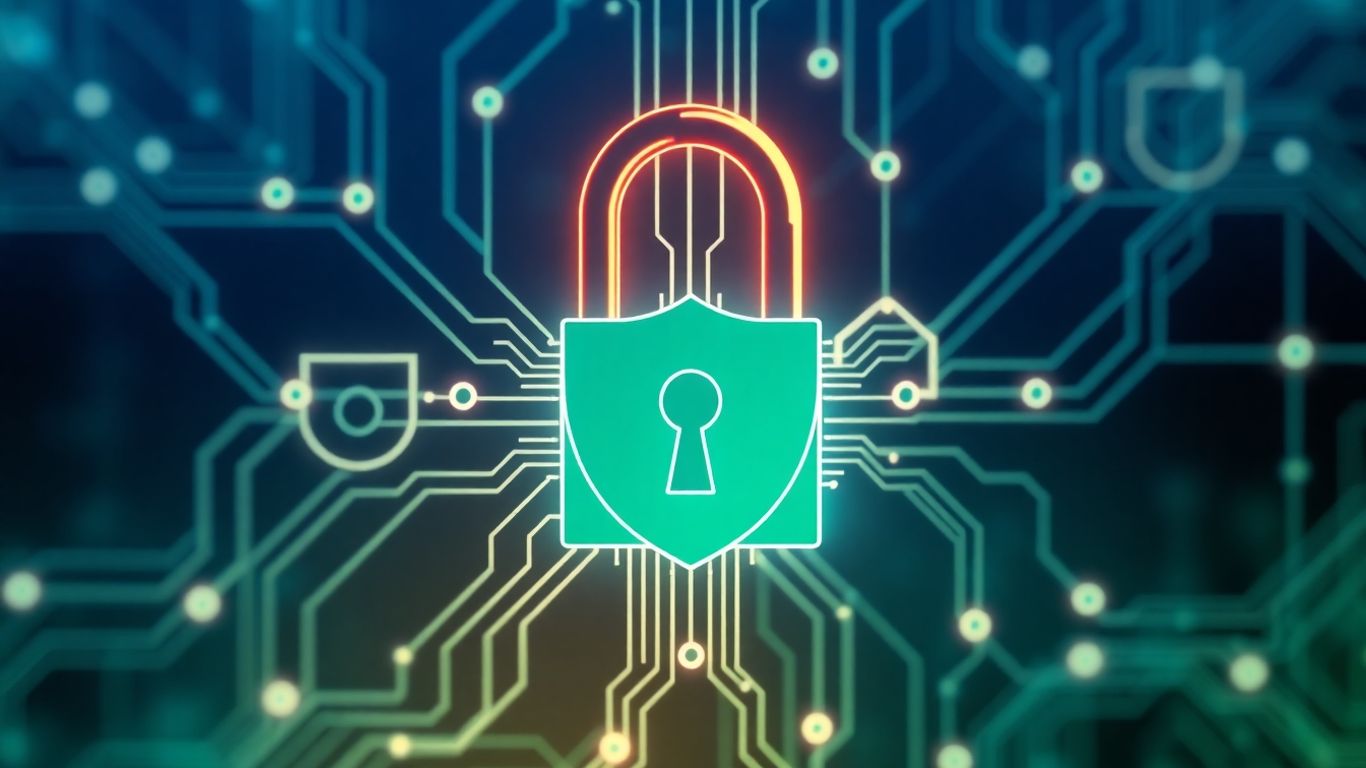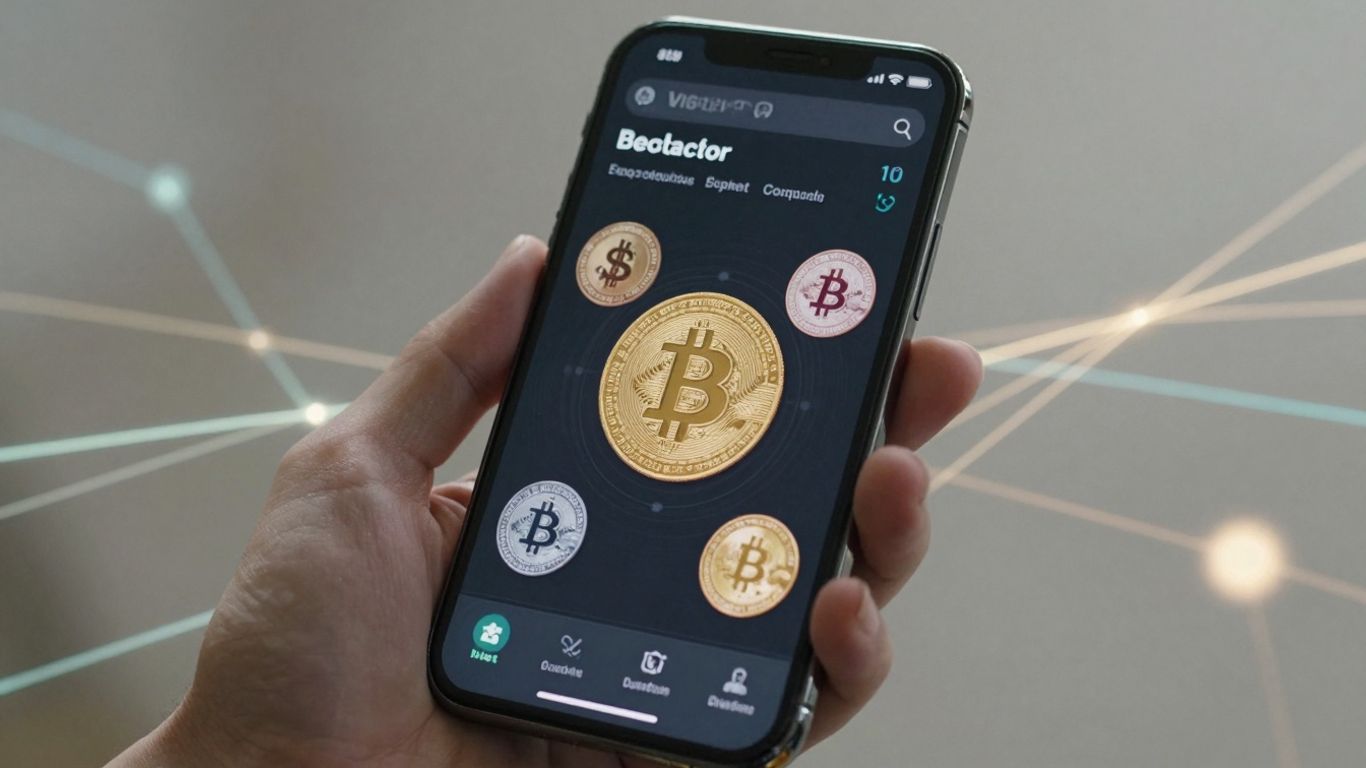[ newsletter ]
Stay ahead of Web3 threats—subscribe to our newsletter for the latest in blockchain security insights and updates.
Thank you! Your submission has been received!
Oops! Something went wrong. Please try again.
Master blockchain security audits with our deep dive into fortifying smart contracts. Learn vulnerabilities, tools, and best practices.





So, you're building something cool on the blockchain and want to make sure it doesn't get hacked. Smart contracts are the backbone of a lot of this stuff, but they can be tricky. We're going to look at how to make sure your code is solid. It’s not just about writing code that works; it’s about writing code that’s safe from people trying to break it. We'll cover what can go wrong, how to check your work, and what others are doing to keep things secure. Think of this as a guide to making your smart contracts tough.
Smart contracts are basically code that runs on a blockchain. They automate agreements, making things happen automatically when certain conditions are met. Sounds neat, right? But like any code, they can have bugs. And because they live on a blockchain, once they're out there, they're pretty much set in stone. You can't just patch them up easily like a regular app. This immutability is a double-edged sword; it's great for trust, but terrible if you've made a mistake.
Think of it like this: you write a set of instructions for a robot. If those instructions have a flaw, the robot will keep doing the wrong thing over and over, and you can't just tell it to stop or change its programming easily. The consequences can be pretty serious, especially when money is involved. We've seen big hacks happen because of simple coding errors that attackers figured out how to use.
Here are some of the usual suspects when it comes to smart contract problems:
Let's talk a bit more about those two biggies: reentrancy and integer overflows. They're responsible for a lot of lost funds in the crypto world.
Reentrancy happens when a contract calls another contract, and that other contract calls back to the original one before the first call is done. If the original contract isn't careful, it might think it has more funds than it actually does, or it might let the attacker drain its balance multiple times. The key to preventing reentrancy is to finish all your internal state changes before making any external calls. It's like paying the cashier first, getting your change, and then leaving the store, rather than handing over a bill and grabbing cash from the till as the cashier is counting.
Integer overflows and underflows are about math. When you do calculations in a smart contract, you're using numbers that have a limit. If you try to go beyond that limit, the number can wrap around. For example, if you have a variable that can hold numbers up to 255, and you add 1 to 255, it might become 0. Or if you subtract 1 from 0, it might become 255. This can mess up calculations for token balances, ownership, or any other numerical value in your contract. Most modern programming languages and smart contract languages have built-in checks for this, but you still need to make sure they're used correctly, especially in older codebases or when dealing with complex arithmetic.
Looking back at how past hacks went down is super useful. It's like studying crime scenes to figure out how to prevent future ones. When a smart contract gets exploited, security researchers and forensic analysts jump in to trace the money and figure out exactly what went wrong.
They examine the transaction history on the blockchain, looking at the sequence of calls, the data sent, and the state changes in the contracts. This helps them pinpoint the exact vulnerability that was abused. For instance, in the DAO hack, analysts could see the attacker repeatedly calling a specific function, withdrawing funds each time, because the contract didn't properly update the balance before allowing the withdrawal.
Analyzing these breaches isn't just about pointing fingers. It's about learning the patterns, understanding the attacker's mindset, and using that knowledge to build better, safer code. It's a constant cat-and-mouse game, and the more we learn from past mistakes, the better our defenses become.
By dissecting these events, we get a clearer picture of the common attack vectors and the specific coding mistakes that lead to disaster. This information is then used to create better auditing tools, develop more secure coding practices, and educate developers on what to watch out for. It's a vital part of the ongoing effort to make the blockchain space more secure.

Building secure smart contracts isn't just about fixing bugs after they appear. It's about setting up a system where security is thought about from the very beginning. Think of it like building a house – you wouldn't just slap walls up and hope for the best, right? You need a solid foundation, good materials, and careful planning. The same goes for smart contracts.
It all starts with the folks writing the code. Developers need to be super careful and follow good habits. This means writing clean code, testing it thoroughly, and looking for potential problems before anyone else does. It's like double-checking your work before you hand it in.
The goal here is to catch issues early, ideally before the code even leaves the developer's machine. It's way cheaper and easier to fix a bug when it's just a few lines of code on your screen than when it's live on the blockchain.
Once the code is written, it needs a thorough check-up. This is where auditors come in. They're like the independent inspectors who make sure everything is up to code. Formal verification is another layer, using math to prove that the contract does exactly what it's supposed to do, no more, no less.
Sometimes, the blockchain platform itself can help. Think of built-in safety features or agreed-upon rules for how contracts should behave. These act like building codes for smart contracts, setting a baseline for safety and making sure different contracts can talk to each other without causing problems.
These three pillars – developer diligence, independent verification, and platform support – work together to create a strong defense against smart contract exploits.
So, you've written your smart contract, and it looks pretty slick. But before you deploy it and potentially lose a bunch of crypto, you gotta check it for holes. That's where tools like Mythril and Oyente come in. They're like automated security guards for your code. They scan your contract, looking for known weak spots. Think of them as running a quick diagnostic. They can spot things like reentrancy bugs or issues where numbers might get too big or too small, causing problems. It's a good first step, but it's not the whole story. These tools are great at finding common problems, but they can sometimes flag things that aren't actually issues, or miss more complex, custom vulnerabilities. They work by looking at the code's structure and potential execution paths without actually running the code (static analysis) or by running it with lots of different inputs to see what breaks (dynamic analysis).
After the automated tools do their thing, it's time for the human touch. This is where you, or a dedicated auditor, really dig into the code. It's like proofreading a book – the spell checker catches typos, but it won't catch if the plot makes no sense. You're looking for logical flaws, weird edge cases the automated tools missed, or just plain bad coding practices that could lead to trouble down the line. This involves stepping through the contract's functions, imagining different scenarios, and asking "what if?" a lot. It takes time and a good understanding of how smart contracts work and, importantly, how people try to break them.
Here's a quick rundown of what a manual review might focus on:
Think of the Solodit Checklist as a super-detailed to-do list for smart contract security. It's not just a tool; it's a methodology. It breaks down all the potential security risks into manageable categories. You go through each item, checking if your contract is vulnerable or if you've put in the right defenses. It covers everything from basic stuff like making sure your variables are declared correctly to more advanced topics like preventing reentrancy attacks and ensuring proper error handling. It's designed to make sure you don't miss anything, no matter how small.
Using a structured checklist like Solodit helps ensure that the auditing process is repeatable and thorough. It provides a framework for auditors to systematically examine contracts, reducing the chance of overlooking critical security flaws due to human oversight or fatigue. This methodical approach builds confidence in the contract's security posture.
It's a bit like following a recipe when you're baking a complicated cake. You wouldn't just eyeball the ingredients, right? You measure, you mix in order, you check the temperature. The Solodit Checklist is your security recipe. It helps you build a secure contract step-by-step, making sure all the right security ingredients are in place.

Smart contracts don't exist in a vacuum. They're part of a bigger picture, and that picture includes both the people using and building them, and the rules that govern them. Think of it like building a new neighborhood; you need good builders (developers), inspectors (auditors), and zoning laws (regulations) to make sure it's safe and works for everyone.
Lots of blockchain projects are open source. This is a huge advantage because it means anyone can look at the code. This transparency is great, but it also means that if there's a mistake, a lot of people can see it. That's where the community really shines. Bug bounty programs are a fantastic way to get people involved in finding problems before bad actors do. Developers offer rewards for anyone who can find a security flaw. It's like paying people to be your extra security guards.
This is where things get a bit more complicated. Because blockchains can operate across borders, figuring out who makes the rules and how they apply is tricky. Regulators are trying to keep up, wanting to make sure things are fair and safe without stifling innovation. They're looking at how existing laws fit with this new tech and what new rules might be needed. It's a balancing act, for sure.
The challenge is to create rules that protect users and the system's integrity while still allowing the technology to grow and be useful. This means finding common ground between technical realities and legal principles.
We can't talk about smart contract security without mentioning big events like The DAO hack. It was a massive event that led to a lot of money being lost and a lot of debate. What happened there showed everyone just how important it is to get smart contract code right. It also led to some tough decisions, like the controversial hard fork of Ethereum, which was done to recover the stolen funds. These incidents, while painful, are really important learning experiences for the whole industry. They highlight the need for better security practices and a deeper understanding of the risks involved.
When something goes wrong with a smart contract, like funds disappearing or unexpected behavior, the first step is often to look at the transaction history. It's like being a detective, but instead of footprints, you're looking at digital records on the blockchain. These records are permanent, which is great for trust, but it also means mistakes or malicious actions are there for anyone to see if they know where to look. We need to follow the money, so to speak, and see exactly how it moved from one place to another. This helps us figure out if a bug in the code caused the problem or if someone intentionally exploited a weakness.
The immutable nature of the blockchain means that once a smart contract is deployed, it cannot be altered, making the initial code and its security paramount.
It's not just about cleaning up messes after they happen. A big part of forensics is looking at the code before it causes trouble. This means acting like a security guard, trying to find weak spots that a hacker could use. We check for common problems that have caused issues in the past, like ways someone could trick the contract into sending them more money than they should get, or ways to get stuck in a loop. It’s about thinking like an attacker and trying to break the contract in every way imaginable.
This proactive approach involves auditing the smart contract's code for common security issues like reentrancy attacks, integer overflows, and underflows, or unhandled exceptions.
Smart contract forensics isn't just about code; it's also about rules and laws. Sometimes, a contract might work technically as coded, but it might break a real-world law or agreement. So, we have to look at both sides. Did the code do what it was supposed to do according to its own rules? And do those rules align with what's legally expected? This is where people who know code and people who know law have to work together. It's a bit like translating between two different languages to make sure everyone understands the situation and what needs to be done next, especially if there's a dispute or a need to recover lost assets.
Look, smart contracts are pretty neat, but they can also be confusing. Most folks using them aren't deep into the code. They just want to use an app or a service. That's why making sure people understand what they're getting into is a big deal. If someone doesn't know what clicking 'approve' really means for their crypto, they could accidentally give away more than they intended. It's like signing a document without reading the fine print – bad things can happen. We need to make it super clear what actions mean and what the risks are. Think simple guides, clear warnings, and maybe even little pop-ups that explain things in plain English before a big transaction.
Just because a smart contract works doesn't mean it's safe. A contract can do exactly what it's supposed to do, but if there's a flaw in its design, it can still be exploited. We're talking about making sure the contract is not just functional, but also resilient. This means thinking about all the weird ways someone might try to break it, even if those ways seem unlikely. It's about building in checks and balances, like making sure a contract can't be drained of all its funds in one go, or that it has a way to be paused if something goes seriously wrong. It's a bit like building a house – you don't just want walls and a roof; you want strong foundations and good security systems too.
Honestly, keeping smart contracts secure is a never-ending job. The technology changes, new ways to attack pop up, and what was safe yesterday might not be safe tomorrow. It's a constant game of catch-up. We've seen big problems happen, and we'll probably see more. The key is that everyone involved – the coders, the auditors, the people using the contracts, and even the platforms they run on – has to stay alert. We need to keep learning from mistakes, sharing what we find, and always looking for ways to make things better. It's not a problem with a single solution; it's more like a continuous effort to stay one step ahead.
Here's a quick look at what contributes to this ongoing effort:
The goal isn't just to prevent hacks, but to build a system where people can trust the technology without needing to be security experts themselves. This requires a collective commitment to vigilance and continuous improvement across the entire ecosystem.
So, we've gone over a lot about keeping smart contracts safe. It's not just one thing, you know? Developers need to write clean code and test it a bunch. Then, having outside folks check it over is a good idea too. And we can't forget about regular people – they need to know what they're clicking on. Plus, the platforms themselves can build in some safety nets. It's a team effort, really. Looking back at past problems helps us get better. By staying alert and always learning new ways to secure things, we can make blockchain tech more reliable for everyone. It's about being careful, teaching each other, and coming up with smart solutions so this cool technology doesn't get messed up by its weak spots.
Smart contracts are like special computer programs that live on the blockchain. They automatically do things when certain conditions are met, kind of like a vending machine. Because they handle valuable digital money and can't be changed once they're out there, it's super important to check them carefully for mistakes or ways bad guys could trick them before they go live.
One tricky way hackers get in is called 'reentrancy.' Imagine you give someone a key to your house, and they use it to get in, take something, and then use the same key to get back in and take more, over and over. Reentrancy attacks work similarly, letting hackers repeatedly use a loophole to drain funds before the contract can stop them.
Yes! There are helpful computer programs like Mythril and Oyente that can scan smart contract code. They're like spell checkers for code, looking for common mistakes and known security weak spots that developers might have missed. They help catch problems early on.
Having people carefully read the code, like detectives looking for clues, is really important. Also, making sure the contract does exactly what it's supposed to do, using math to prove it, can add another layer of safety. Plus, the people who build the blockchain platforms can add safety features, and having clear rules from governments helps too.
The DAO was a big project that used a smart contract to let people invest in other projects. Sadly, a hacker found a way to steal a lot of the money by using a reentrancy attack. This big event showed everyone just how important it is to find and fix security problems in smart contracts before they can cause harm.
For users, it's key to be aware and careful. Always double-check what you're agreeing to when a smart contract asks for permission to do something with your digital money. Think of it like reading the fine print before signing any agreement. Also, keeping your digital wallet secure is a must!


